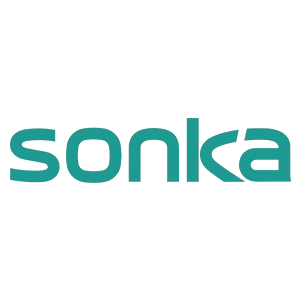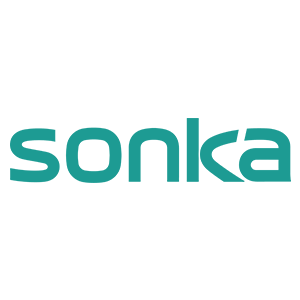Body composition analysis machines serve a crucial role in modern health kiosks, translating various physical metrics into comprehensive health data. These machines measure metrics such as Body Mass Index (BMI) and body fat percentage, providing insights into an individual's health status beyond traditional weight measurements. Utilizing advanced sensors and sophisticated software, these machines perform accurate assessments by considering various physical parameters. The integration of sensors, such as bioelectrical impedance sensors, enables the precise calculation of body composition metrics, vital for understanding one's health. This technology is pivotal in preventive healthcare, fitness, and weight management. By offering a detailed analysis of body composition, these machines empower individuals to achieve better health outcomes through personalized strategies.
Vital sign monitoring, focusing on blood pressure and oxygen saturation, is essential in health assessments. These indicators provide crucial insights into cardiovascular and respiratory health. Health kiosks incorporate automated monitoring devices that use cuff-based technology for blood pressure, and pulse oximetry for measuring oxygen saturation. These technologies ensure accurate and quick readings, facilitating proactive healthcare management. Regular monitoring of these vital signs is significant for the early detection of potential health issues, such as hypertension and chronic obstructive pulmonary disease (COPD). Through continuous tracking of these vital signs, individuals can manage chronic diseases more effectively, leading to improved overall health and reduced risk of complications.
Telemedicine has revolutionized the functionality of modern health kiosks, enabling real-time consultations with healthcare professionals. By integrating telemedicine, these kiosks facilitate a seamless connection between patients and doctors, offering immediate access to medical advice. This is particularly beneficial in remote or underserved areas where healthcare providers are scarce. Furthermore, health kiosks have incorporated e-prescription capabilities, making it easier for patients to receive their medications promptly. By electronically sending prescriptions directly to pharmacies, the kiosks streamline the process, enhance medication adherence, and improve patient convenience.
With the rise of telemedicine, statistics show its growth has significantly impacted patient access to care. For instance, a study from Texas A&M indicates the potential to bridge healthcare gaps, especially in rural areas suffering from a shortage of clinics and hospitals. The demand for telehealth services expanded rapidly during the COVID-19 pandemic, highlighting its critical role in modern healthcare delivery. This integration not only overcomes geographical barriers but also provides a reliable solution for continuous healthcare support.
Robotic medication dispensing systems in health kiosks ensure enhanced safety and operational efficiency. These systems automate the dispensing process, significantly reducing human errors and ensuring each patient receives accurate medication dosages. Embedded safety protocols monitor the dispensing mechanism rigorously, helping to minimize errors that could impact patient health. The use of advanced robotic systems ensures a systematic approach to medication management, thus elevating the standard of patient care.
Looking toward the future, advancements in robotic technology are poised to reshape how health kiosks operate, potentially transforming patient interactions. Future trends may include more intuitive interfaces and improved automation, increasing the kiosks' effectiveness and patient satisfaction. Enhanced robotic systems in health kiosks could bring about improvements in medication distribution efficiency, adherence to safety standards, and ultimately, patient outcomes in healthcare settings. Such innovations are instrumental in the ever-evolving landscape of healthcare technology.
Health kiosks serve as invaluable tools in rural healthcare deserts, significantly enhancing medical access for populations deprived of even basic healthcare amenities. In regions like Milam County in Texas, where hospitals have closed, health kiosks provide crucial services that otherwise require traveling long distances. These kiosks, equipped with state-of-the-art telemedicine capabilities, bridge the healthcare gap by offering live consultations and immediate prescription dispensing, thus reducing healthcare disparities significantly. Statistics show that rural populations utilizing health kiosks experience improved healthcare outcomes and increased access to necessary treatments, addressing the critical need for immediate care in areas lacking healthcare infrastructure. For instance, the OnMed initiative in Texas reflects a successful implementation, showcasing how strategic deployment can pave the way for better healthcare delivery in underprivileged areas.
Health kiosks play a vital role in supporting chronic disease prevention programs by facilitating regular health screenings and enhancing awareness through patient education. They are leveraged in various settings to offer continuous monitoring of vital health metrics such as blood pressure and weight, promoting early detection and proactive management of chronic conditions. Numerous chronic disease management programs have integrated health kiosks into their operations, successfully educating patients about their health status and tracking progress over time. Data from these initiatives highlight significant improvements in patient compliance and effectiveness in prevention efforts, validating the role of health kiosks in curbing the rise of chronic diseases. Through community-based health initiatives, kiosks have proven to be efficient tools in disseminating information and resources, significantly impacting public health outcomes in settings challenged by resource limitations.
The pricing of body composition analysis machines is a critical factor for organizations considering their use in health kiosks. The cost typically encompasses both purchase and maintenance, with prices varying significantly based on the machine's technological sophistication and manufacturer. For instance, basic models may focus on essential metrics like body fat and muscle mass, while advanced versions offer comprehensive assessments, including bone density and hydration levels. Pricing can also differ when purchasing single units compared to bulk acquisition deals, which are often more cost-effective for organizations implementing multiple kiosks. Such pricing dynamics necessitate careful consideration to optimize budget allocations.
To ensure the success of health kiosks in community health initiatives, sustainable funding models are paramount. Various strategies can be employed, such as public-private partnerships and grants that have proved effective in securing the necessary financial backing. For example, governmental entities can collaborate with health technology companies to share costs, using grant programs to fund the infrastructure. Communities must also consider ongoing operational costs, including staffing, maintenance, and technology updates, to maintain the kiosks' efficiency. By selecting robust funding models and planning for long-term sustainability, communities can ensure health kiosks remain valuable resources.


Copyright © 2025 by Shenzhen Sonka Medical Technology Co., Limited - Privacy policy